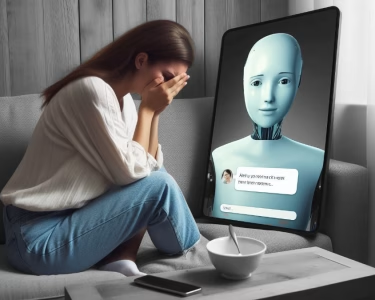Remember when automation meant a robotic arm assembling car parts on a factory floor? Those days are long gone.
Fast forward to 2025, and AI-powered automation has moved far beyond the assembly line. It’s writing emails, making business decisions, designing graphics, moderating online communities — even helping doctors diagnose rare diseases. If you’re not paying attention, it might seem like it’s happening in the background. But make no mistake: this is a full-blown technological revolution.
Let’s explore how advanced AI and automation are transforming work, business, and society — and why it matters more than ever.
🧠 From Task-Based to Thinking Machines
Earlier generations of automation followed simple, rule-based instructions: “If A happens, then do B.” It worked — but only in tightly controlled environments.
Now, thanks to machine learning, large language models, and real-time data processing, today’s systems don’t just follow rules — they learn, adapt, and predict. They can:
-
Understand natural language
-
Analyze complex datasets in milliseconds
-
Make nuanced decisions under uncertainty
Think of AI copilots like GitHub Copilot or Microsoft 365 Copilot. These tools aren’t just passive assistants — they actively contribute to the creative and decision-making process.
⚙️ Automation You Can’t See (But Definitely Feel)
Some of the most impactful uses of automation today are invisible to the average person, but they’re running the show behind the scenes:
-
E-commerce Platforms: AI curates your shopping experience in real time. Product recommendations, dynamic pricing, and even warehouse fulfillment are automated and personalized.
-
Healthcare Diagnostics: Advanced AI tools like DeepMind’s AlphaFold are helping researchers understand protein structures, accelerating drug discovery in ways previously unimaginable.
-
Customer Support: Modern AI chatbots don’t just spit out FAQs — they understand tone, context, and even emotion. Some are good enough to handle tier-1 support without customers realizing it’s not a human.
🧑💼 The Human + AI Partnership: Not a Job Killer, But a Role Changer
Let’s talk jobs — because that’s always the elephant in the room.
Yes, AI will replace certain roles, especially repetitive or rules-based tasks. But it’s also creating new categories of work:
-
Prompt Engineers
-
AI Ethicists
-
Automation Architects
-
AI Workflow Designers
The keyword here is augmentation, not replacement. In most industries, the real winners are those who learn to work with AI — using it as a powerful tool to boost productivity and creativity.
Think of it this way: AI is the calculator for modern knowledge work. The better you know how to use it, the more you can do.
🛑 The Challenges: Bias, Black Boxes & Burnout
It’s not all sunshine and progress.
Advanced AI systems still struggle with:
-
Bias in training data
-
Lack of transparency in decision-making (the infamous “black box” problem)
-
Ethical dilemmas around surveillance, labor, and data ownership
There’s also the risk of automation overload — where humans are expected to keep up with AI-speed workflows, leading to burnout and decision fatigue.
This is where human oversight, thoughtful design, and clear policies become essential. We need to build systems that serve people — not the other way around.
🚀 Final Thoughts: We’re Just Getting Started
AI and automation in 2025 are no longer the future — they’re the present. But we’re still in the early chapters of what these technologies can do.
Whether you’re a startup founder, a developer, a digital creator, or just a curious mind, now’s the time to get comfortable with advanced automation tools. Learn how they work, how they think, and most importantly — how you can collaborate with them.
Because in the end, the best version of the future isn’t human or machine.
It’s human + machine, working in tandem.





